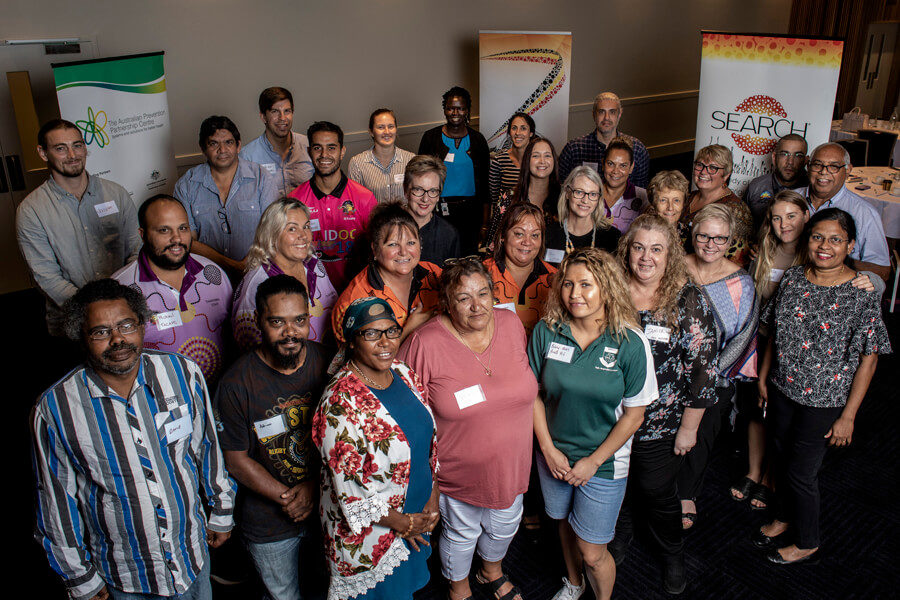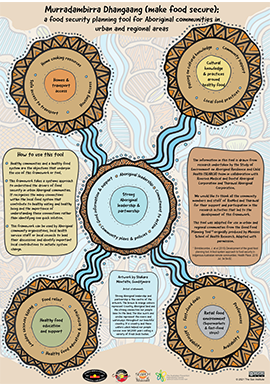Murradambirra Dhangaang – a new planning tool to make food secure

DATE
TYPE Prevention Centre News
Food insecurity is defined as when households run out of food and cannot afford to buy more. It is a serious challenge facing Aboriginal communities throughout Australia, including one in five community members living in non-remote environments, and is associated with higher rates of obesity and chronic disease.

The tool was developed in a program of work supported by the Prevention Centre and led by a team from the Study of Environment on Aboriginal Resilience and Child Health (SEARCH). It was co-developed with Tharawal Aboriginal Corporation in Campbelltown and Riverina Medical and Dental Aboriginal Corporation (RivMed) in Wagga Wagga, along with other stakeholders.
Simone Sheriff, a SEARCH Aboriginal researcher, said the tool is designed to lead discussions around all the interconnected factors that might lead to food security in a community, and identify what is needed locally to initiate change.
“Although each Aboriginal community is unique, having a tool like this available will be a great resource that can be taken and used as a starting point for discussions around food security and then modified to suit the needs of other communities and their local food system,” she said.
“The information we gathered is so rich and full of important thinking around food security, so it’s great we can share this knowledge with other communities”.
SEARCH researcher Ms Jacqueline Davison said there has been a historical tendency to try to fix the problem with simplistic measures such as food relief.
“But food security is influenced by a huge food system,” she said.
“To make a difference, programs addressing food security need to take into account factors like the affordability of fresh food, junk food marketing and cultural knowledge and practices.”
The research team conducted one-on-one discussions with Aboriginal community members and stakeholders from the local health district, council, food relief agencies and education. They then followed up with group model building workshops to gain a greater understanding of all the local factors impacting food security.
They found there are multiple, interrelated factors at play, including the high price of food, high unemployment and low income, lack of transport to purchase fresh food, lack of nutrition knowledge or cooking and budgeting skills, and lack of suitable housing and cooking facilities.
The tool was co-created with Tharawal and RivMed by integrating these research findings and refining them into questions for communities to consider. It was designed by Aboriginal artist Shakara Montalto, a Gunditjmara woman, and called Murradambirra Dhangaang, which in the Wiradjuri language means ‘make food secure’ chosen by some of the community members involved.
The tool takes users through the different aspects of the complex food system that might influence food security, such as homes and transport access, cultural knowledge and practices around healthy food, leadership, education and the retail food environment.
Users are prompted to ask a series of questions to identify the barriers to food security and to make connections between these different factors, rather than identifying one quick solution.
- The tool is available for download from the Prevention Centre website. It consists of an interactive web page, as well as a series of six PDF documents that can be printed out on A3 paper for use to guide discussions.
- With thanks to Associate Professor Julie Brimblecombe and Menzies School of Health Research for their work on good food planning in remote Aboriginal communities, from which this tool is adapted.
The project team would really appreciate any feedback on use of this tool in communities. Please contact the team here.



